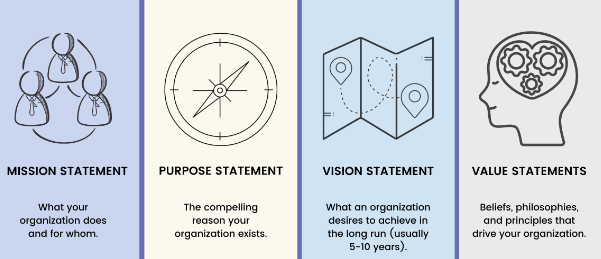Why Rescue Teams Need a Mission Statement
Rescue teams face daunting challenges—saving lives in unpredictable and high-risk situations. Success demands clarity, organization, and precision, as even minor missteps can have catastrophic consequences.
A mission statement is essential for any rescue team. It provides a clear purpose, aligns the team’s goals, and ensures everyone has access to the same guiding principles. When resources are stretched, a mission statement can also drive cost efficiency, ensuring that every decision supports the team’s ultimate objective.
The Core Elements of a Mission Statement
- Purpose
- Defines the team’s reason for existence.
- Focuses on the overarching goal of saving lives and how the team operates to achieve it.
- Objectives
- Provides measurable and actionable goals that guide operations.
- Ensures alignment between leadership priorities and team actions.
- Values
- Highlights the principles that shape the team’s decision-making.
- Creates a unifying framework that fosters morale and trust.
Why a Mission Statement Matters
A mission statement serves as the foundation for a rescue team’s operations, offering clarity and direction in critical moments. Without it, teams risk drifting from their objectives, leading to wasted resources, inefficiency, and reduced effectiveness.
Key Benefits of a Mission Statement:
- Alignment Between Leadership and Team
- Ensures that all personnel understand the team’s purpose and objectives.
- Promotes a unified approach, reducing confusion during high-pressure situations.
- Operational Clarity
- Provides clear guidance on how to handle hazardous scenarios effectively.
- Ensures all team members have access to the same information, improving decision-making under stress.
- Economic Efficiency
- Helps leadership focus on cost efficiency without sacrificing mission goals.
- Identifies inefficiencies, allowing for swift course corrections.
Incorporating Economic Realities
Effective mission statements also reflect the economic realities of rescue operations. Teams must balance resource limitations with the demands of high-stakes missions.
Why This Matters:
- Resource Allocation
- Identifies areas where resources may be wasted and ensures funds are directed toward impactful strategies.
- Enables leadership to make informed decisions under tight financial constraints.
- Optimizing Operations
- Balances cost efficiency with mission effectiveness, allowing teams to achieve objectives without overextending resources.
- Encourages innovation in resource management to maintain high standards under challenging conditions.
Crafting a Mission Statement
When developing a mission statement, focus on creating a document that is:
- Clear and Concise: Avoid vague or overly complex language.
- Action-Oriented: Highlight specific goals and the steps required to achieve them.
- Reflective of Values: Ensure the team’s core principles are evident and inspire confidence among members.
- Adaptable: Consider how the mission statement can evolve with changing circumstances.
Example Mission Statement:
“To save lives by providing expert technical rescue operations with integrity, efficiency, and unwavering dedication to safety and service.”
Building Leadership and Team Morale
An effective mission statement does more than guide operations—it builds trust and morale. When teams understand the “why” behind their work, they are more motivated to perform at their best.
Leadership Tips:
- Use the mission statement as a reference point for decisions during training and operations.
- Regularly communicate its importance to the team to reinforce alignment and unity.
Conclusion: A Strategic Imperative
A mission statement is more than a formality—it’s a strategic imperative for any rescue team. It:
- Keeps teams focused on their core objective—saving lives.
- Enhances operational clarity and efficiency.
- Ensures resources are used wisely, even in high-pressure environments.
By integrating economic considerations, a mission statement enables teams to achieve their goals effectively while managing resources responsibly.
Take the time to develop or revise your mission statement—it could make all the difference.
Peace on your days,
Lance
Explore More at Rigging Lab Academy:










